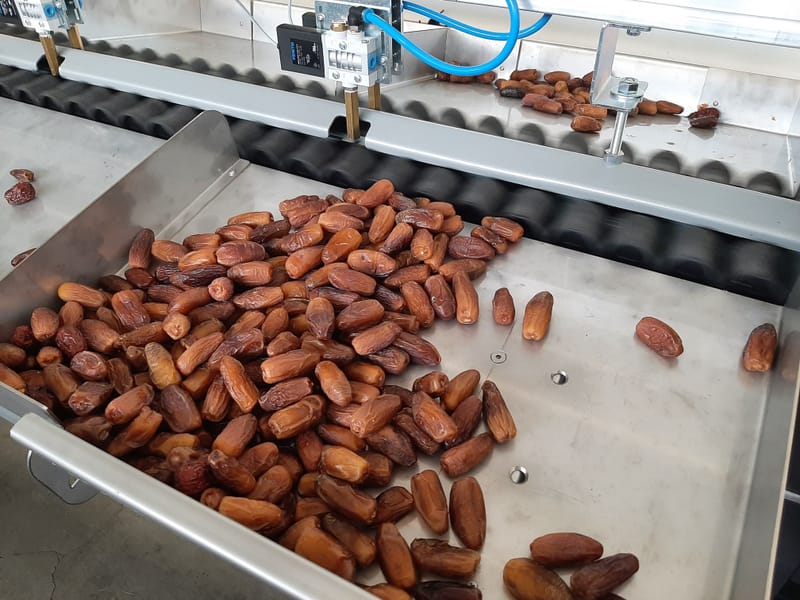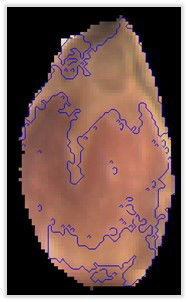External Quality defect system


INGIVISION cameras is the quality classification system for dates.
Every vision module is based on the technology of cameras with a high-resolution CMOS
multispectral sensor (Full HD 1980 x 1080 pixel) and GEthernet interface.
The video camera is placed vertically to the lane and scans dates running on one lane.
The LED illumination allows the camera to acquire the images of the surface of the dates in the visible spectrum
and in the near infra red spectrum. The analysis of the NIR allows the cameras to precisely determine the profile of the dates, and therefore their geometric dimensions (equatorial diameter, length, shape), even in presence of very dark view.
Algorithms specifically developed for this kind of dates calculate the distribution of the softer color zones. Those color parts are typically associated to the parts of the dates’s skin that are separated or removed from the pulp.
The system collects the data flow coming from the vision modules and realize a chromatic and NIR analysis of the dates’ surface through specifically developed algorithms
Software features
• Measurement of weight and equatorial diameter of the dates
• Indication of the presence of two dates in the same roller
• Indication of the presence of loose skin areas on the dates surface
• Managing the exits
• Store the classification parameters in freely customizable charts
• Print statistics of the batches
Max speed selection
• 25 dates/second
Resolution
• 0.25 mm/pixel => precision in the measurement of the diameter +/- 1.0 mm
control and automation of your sorting line, it centralizes all information about each singledate in order to forward
control suite that integrates all major PLC systems and other input/output devices
MULTISENSOR MODULES FOR MEASURING SURFACE FEATURES.
The modules acquire images of the visible part of the dates.
The system is inclusive of the software package for the qualitative analysis of the dates external surface. The
analysis is based on the calculation of the distribution of the characteristics in the visible spectrum and in the
near infrared (800-900 nm) for the visible surface of the fruit. The software contains algorithms specifically
developed for this type of fruits, with particular attention to the possibility to calculate the distribution of the areas
of lighter color typically associated with parts of skin raised and detached from the pulp (loose skin)